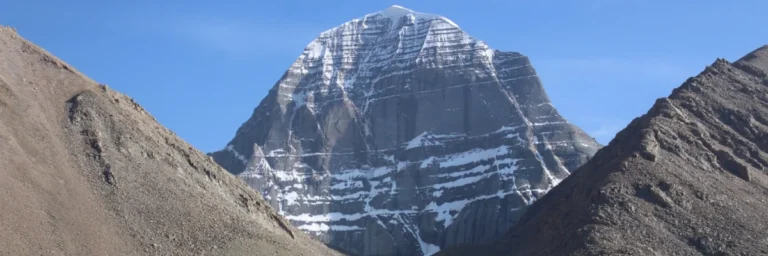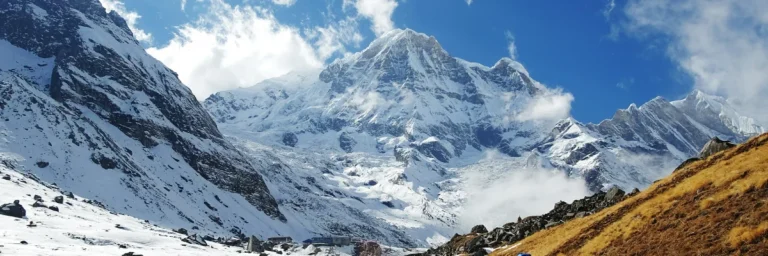
If you’ve ever dreamed of trekking to the base camp of the world’s highest mountain, Mount Everest, understanding the total Everest Base Camp Trek Distance distance you’ll need to cover is important.
The Everest Base Camp Trek is a demanding yet very rewarding trekking journey. It covers over 38 miles round trip. This trek will take you through quiet and calm villages, stunning landscapes, and up to altitudes of over 17,000 feet.
So, get ready to experience the adventure of a lifetime on this epic trek in the Himalayas.
Table of Contents
The Everest Base Camp Trek Distance
The distance from Lukla to Everest Base Camp on the Everest Base Camp trek is approximately 38 miles one way.
Daily distances covered on key stops like Namche, Tengbouche, Dingbouche, and Lobuche during the trek can vary. Typically, it ranges from 5 to 10 miles each day, depending on the itinerary and pace of the trekker.
Understanding the Everest Base Camp trek distance is also important in planning for acclimatization stops along the way. These stops help the body adjust to the increasing altitude gain.
By spacing out rest days and shorter hiking distances strategically, trekkers can reduce the risk of altitude sickness. This ensures a successful ascent to Everest Base Camp.
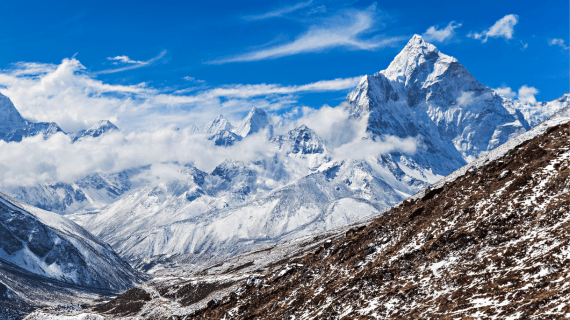
Planning the trekking route and itinerary considers varying elevation gains and challenging terrain. It offers trekkers stunning views of Mount Everest, monasteries, and the unique Sherpa culture along the way.
Adequate gear, accommodation bookings, and hiring local guides or porters all contribute to a safe and enjoyable Everest Base Camp trekking experience in Nepal.
Key Stops on the Trek
Namche
Namche Bazaar is an important stop on the Everest Base Camp trek. Its strategic location helps trekkers acclimatize to the altitude.
At around 11,286 feet, Namche’s elevation impacts trekkers adjusting to higher altitudes. It’s an important rest point before they continue further towards the base camp.
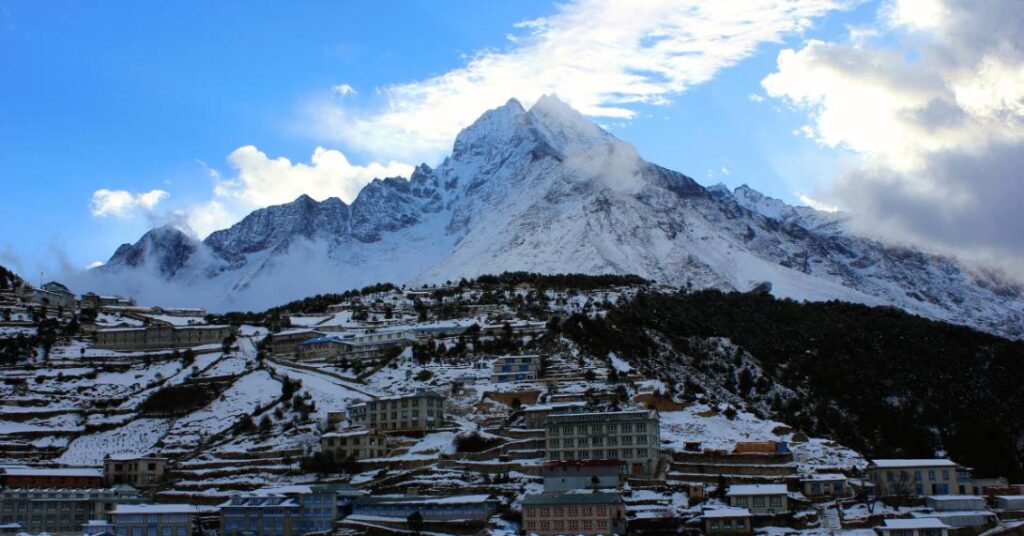
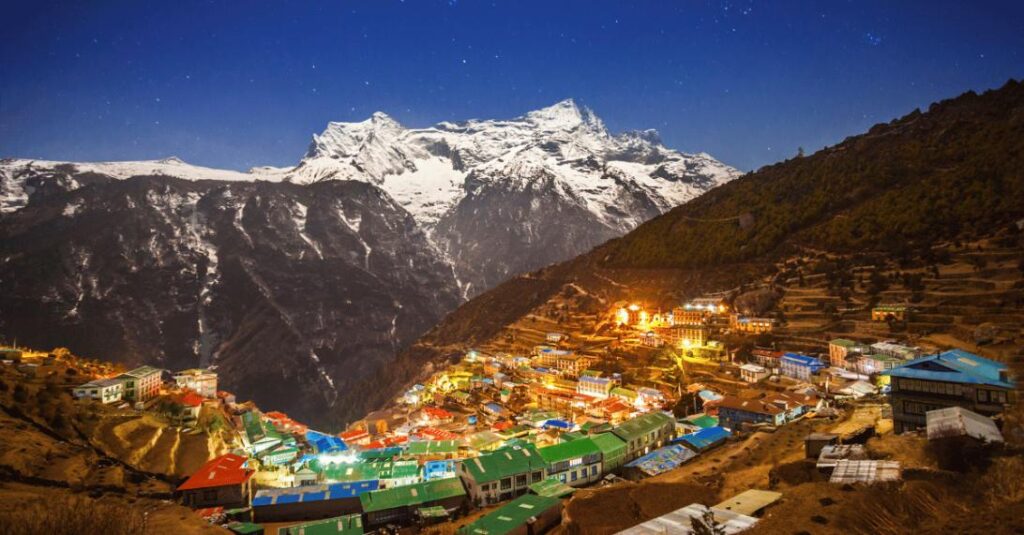
This mountain town offers various services like lodges, gear shops, and Wi-Fi cafes. It gives a taste of civilization in the rough terrain, allowing for comfortable rest and re-energizing.
Moreover, Namche provides breathtaking views of mountains, including Mount Everest. It is a moment of stooping into an inspirational environment for trekkers.
With its services catering to trekkers’ needs, Namche is a vital hub on the Everest Base Camp trek route.
Tengboche
Tengboche is a special place in Nepal, along the Everest Base Camp trek. It’s known for the Tengbouche Monastery, which is big and important in the region.
This monastery lets trekkers learn about Tibetan Buddhism and Sherpa culture, adding cultural value to the journey.
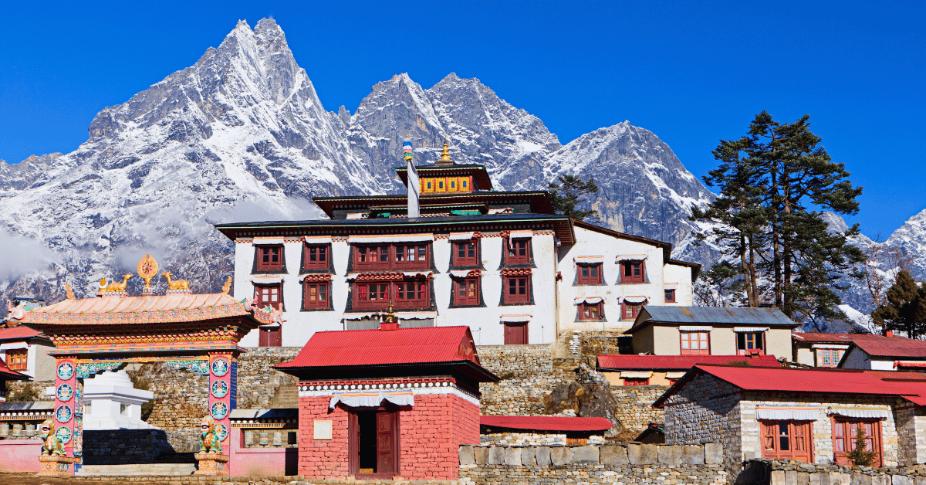
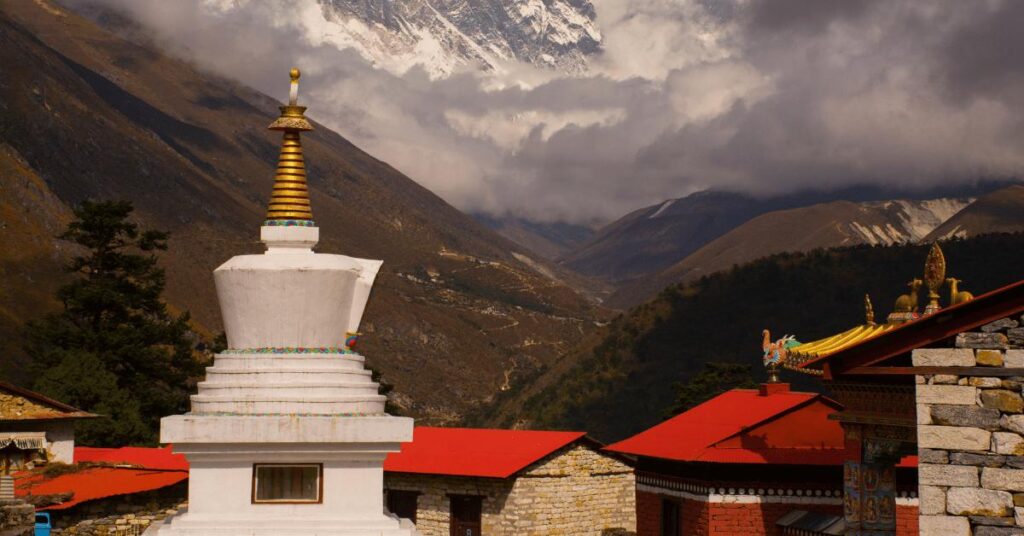
Tengbouche also gives amazing views of Mount Everest and other mountains, making the trek more exciting. Trekkers can relax there, adjust to the high altitude, and then move on to Everest Base Camp.
In Tengboche, you can find places to stay, rent gear, and hire local Sherpa guides, which are all helpful for the journey.
Dingboche
Dingboche is also an important stop on the Everest Base Camp trek. It is located at around 4,410 meters above sea level.
This stop helps trekkers acclimatize to the high altitude before moving forward. Taking an extra day in Dingboche allows hikers to rest and get used to the thin air. This reduces the risk of altitude sickness as they continue towards Everest Base Camp.
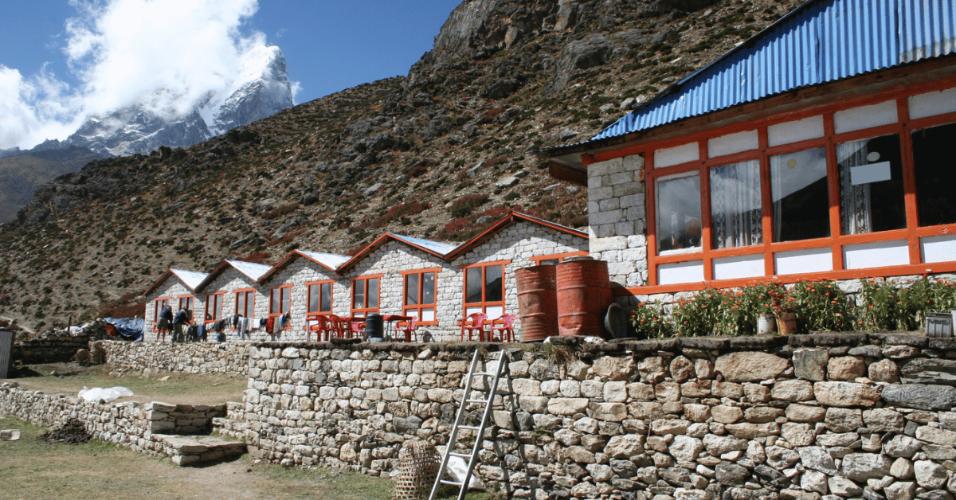
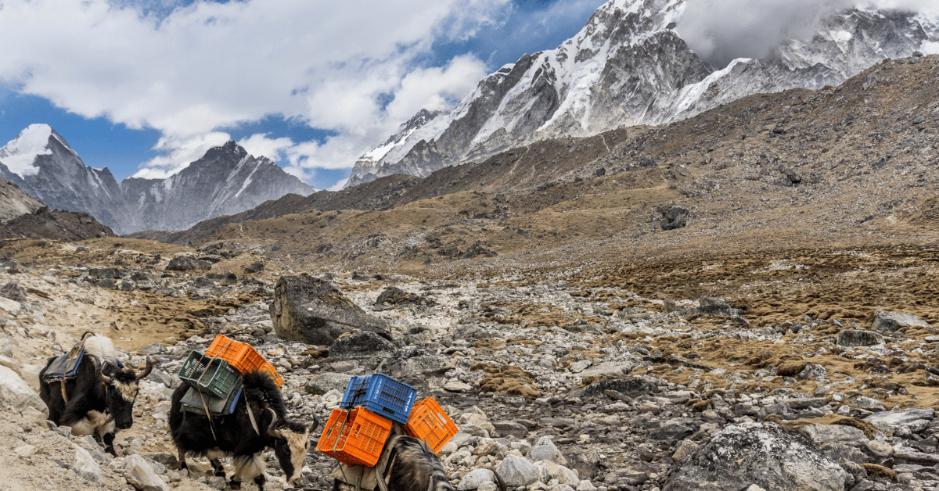
In addition to acclimatization, Dingboche offers beautiful views of the mountains, such as Lhotse and Ama Dablam. Trekkers can also explore the Dingboche Monastery to experience the local Sherpa culture.
Lobuche
Lobuche is yet another important stop on the Everest Base Camp trek. It offers stunning views of mountains like Mount Everest.
The journey from Pheriche to Lobuche is known for its higher altitude, tough terrain, and the need to acclimatize properly. Trekkers will enjoy beautiful mountain views when trekking to Lobuche, passing villages like Dingboche and Tukla.


During the trek, a day of rest in Lobuche is included for acclimatization. Travelers should be prepared with the right gear and have accommodations booked in advance, as Lobuche is a popular resting place for those heading to Everest’s summit.
Daily Everest Base Camp Trek Distance Covered
Kathmandu to Lukla Airport
Day 1 of the Everest Base Camp trek starts in Kathmandu. This is the starting point of the Everest Base Camp trek. Trekkers fly to Lukla Airport, which takes about 30 to 40 minutes. This flight shows them the beautiful mountain views for the first time.
Upon landing in Lukla, at an altitude of around 9,383 feet, trekkers begin their journey to the famous Everest Base Camp. The trek from Lukla to Namche Bazaar involves a moderate hike. This allows trekkers to adjust to the increasing altitude.
Along the way, trekkers pass through villages like Monjo and Tengboche. They get to experience the Sherpa culture and enjoy the scenic Himalayan surroundings.
Day 1 sets the tone for the trek ahead. It marks the start of an adventure filled with challenges, stunning views, and the thrill of reaching Everest Base Camp.
Lukla to Pheriche
Day 2 of the Everest Base Camp Trek distance covers about 12 miles from Lukla to Pheriche.
Key stops along this route include Namche Bazaar, Monjo, Tengboche, Dingboche, and Lobuche.
The elevation changes significantly, from around 9,300 feet in Lukla to nearly 14,000 feet in Pheriche.
Hence, proper acclimatization is very important to avoid altitude sickness during this ascent. Rest, hydration, and following the guidance of experienced guides are important for a safe trek.
Consider the average hiking pace at higher altitudes and accommodation options in each village to plan effectively when calculating the Everest Base Camp Trek distance.
The stunning views of Mount Everest and the surrounding mountains serve as motivation for this challenging trek.
Pheriche to Lobuche
Thereafter, during the Everest Base Camp trek, trekkers will go from Pheriche to Lobuche. Some key stops along the way are Dingboche, Duglha, and Thukla. The distance from Pheriche to Lobuche is about 7 kilometers. It usually takes 3–4 hours to hike this section, depending on the trekker’s pace and acclimatization to the altitude.
This part of the trek offers amazing mountain views, including Mount Everest. Trekkers get to see the Sherpa culture with visits to monasteries. It is very important to acclimatize carefully and follow the Sherpa guides so trekkers can make it through this challenging route and get ready for the Everest Base Camp.
Lobuche to Everest Base Camp
The trek from Lobuche to Everest Base Camp has some very important stops. One of these is Gorak Shep, where trekkers take a break before reaching the base camp.
It usually takes 4-6 hours of hiking to go from Lobuche to Everest Base Camp. The altitude increases significantly on this route, and the thin air can be challenging for trekkers as they move towards the famous mountain.
Acclimatization in Namche Bazaar, Dingboche, and other stops is essential. This helps trekkers adjust to the high elevation. Trekkers must have the right gear, like sturdy hiking boots, warm clothes, and oxygen supplies readily with them.
It is to be noted that Sherpa guides are very helpful during the journey. They assist trekkers throughout the trip. During the whole journey, during the time of emergency, guides play a very important role. It might be tempting to try heading to the EBC solo but it is our appeal to always take a guide while heading to remote himalayas of Nepal. It’s the matter of lives we are talking about and is definitely not worth not taking safety measures.
Also, the Nepal Tourism Board has implemented a ban in solo trekking to enhance safety and prevent incidents. The decision was influenced by the increasing number of missing solo trekkers and,, therefore, the need to regulate trekking activities to ensure the well-being of trekkers coming from all corners of the world and reduce the strain on rescue operations.
Time Estimates for the Trek
The Everest Base Camp trek distance covering usually takes 12–14 days.
- It covers a distance of about 130 kilometers round trip.
- Factors to consider for estimating the time include altitude gain, acclimatization, hiking route, rest days, and physical fitness level.
- Trekkers start in Kathmandu, fly to Lukla, and then head towards several locations like Namche Bazaar, Monjo, Tengboche, and more.
- Along the way, they enjoy views of Everest, visit Sherpa villages and monasteries, and stay in lodges.
- The trek is challenging due to altitude and terrain, and it requires proper gear, oxygen, and guidance from Sherpa guides.
- It’s advisable to book through a tour operator for a well-planned itinerary and porter support.
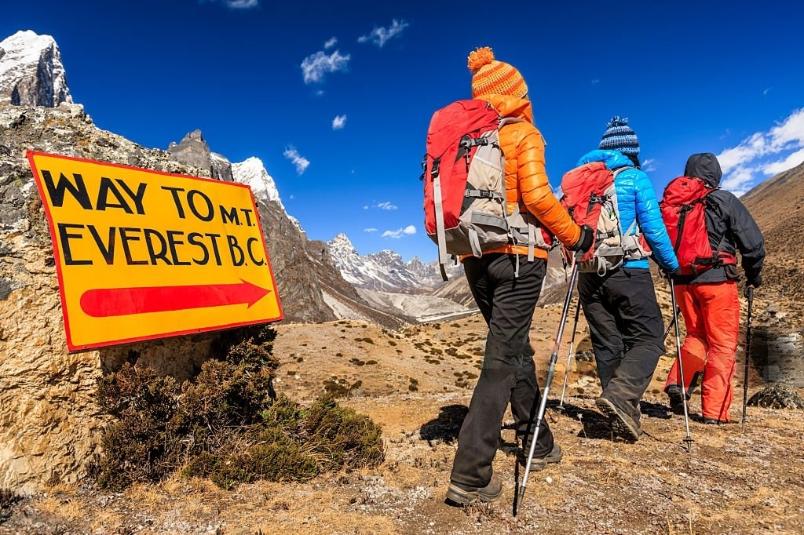
Reaching High Points on the Trek
Physically preparing for reaching high points and also covering the total Everest Base Camp Trek distance involves regular exercise. Focus on cardiovascular endurance, strength training, and stamina building.
Proper acclimatization is important for successfully reaching high points on the trek. The rapid altitude gain requires recommended stopovers in Namche Bazaar, Dingboche, and Lobuche to help with acclimatization.
Common challenges when reaching high points on the trek include altitude sickness, fatigue, and extreme weather conditions. These challenges can be managed by gradual ascent, staying hydrated, using proper gear, and listening to local guides. Overcoming these challenges ensures a safe ascent to high points like Kala Patthar, which offers stunning views of Mount Everest and the surrounding mountains.
Prioritizing acclimatization and understanding the route, elevation gain, and distance to be covered are important for a successful Everest Base Camp trek. It offers a rewarding experience amidst Nepal’s breathtaking mountain scenery.
Logistics of the Trek
Traveling to Everest Base Camp involves flying from Kathmandu to Lukla and then trekking to Namche Bazaar. Lodging and meals are available in lodges or tea houses along the way in places like Monjo, Dingboche, and Gorak Shep.
Safety on the trek is ensured by knowledgeable guides, first aid supplies, and oxygen in case of altitude sickness. Emergency communication and medical support are also accessible if needed.
The round trip covers about 130 kilometers, with an elevation gain of over 3,000 meters. Trekkers get stunning views of Mount Everest and nearby peaks, with the challenge of reaching Kala Patthar for a panoramic view of the Everest summit.
Conclusion
Opting for the Everest Base Camp Trek and covering the Everest Base Camp Trek distance is a real test of endurance and, yes, a chance to experience the actual raw beauty of nature. The trek covers about 38 miles from Lukla to the base camp, offering stunning views of Mount Everest and the surrounding peaks. It’s also an opportunity to understand the Sherpa culture, visit ancient monasteries, and push your limits.
Knowing the distance is important for planning rest and acclimatization stops. Trekkers should mandatorily listen to their bodies, respect the challenges of altitude and terrain, prepare well, and also without fail follow Sherpa guides’ advice.
Ultimately, the trek is not just about reaching the base camp but about enjoying the actual journey, facing challenges, and creating lasting memories in the Himalayas.
So, get ready, to cover the entire Everest Base Camp Trek distance, and breathe in the mountain air, and begin this unforgettable adventure!
FAQ
You may also like:
Send an Enquiry
Error: Contact form not found.
© 2025 - Himalayan Trekking and Tours (P) Ltd. All Rights Reserved.


